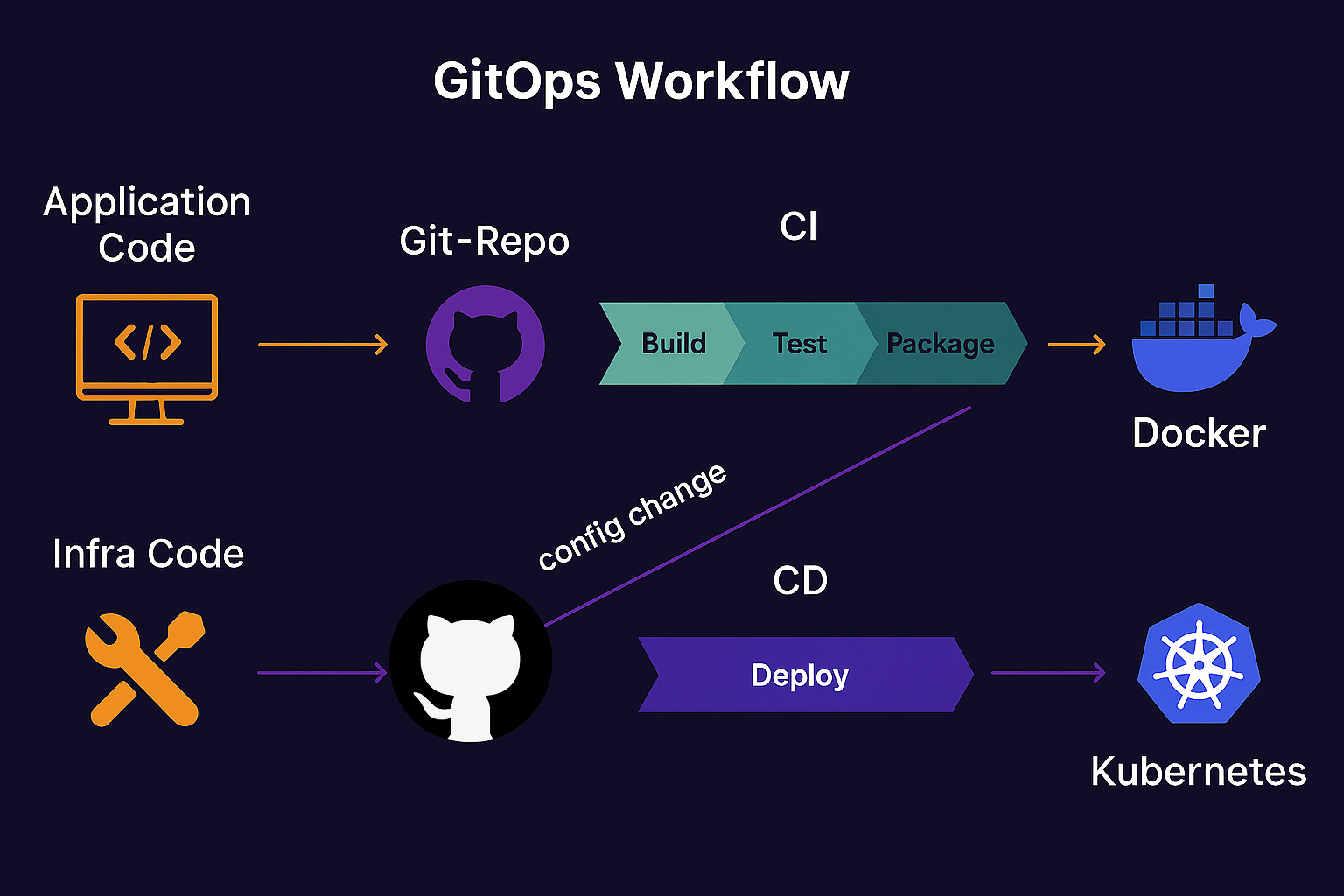
CI/CD: The Developer’s Superhighway
What is CI/CD?
CI/CD stands for Continuous Integration and Continuous Delivery (or Deployment). It’s the practice of automatically building, testing, and delivering code whenever changes are made. Instead of manually bundling code, testing it in one-off environments, and handing it off to operations, CI/CD creates a smooth, automated pipeline from developer commit → running service.
Think of it as a conveyor belt for software:
CI/CD Pipeline: The Developer's Conveyor Belt
Each stage validates and deploys code automatically • Rollbacks provide safety nets • Continuous flow = faster delivery
- Continuous Integration (CI): Every change is integrated early and tested automatically.
- Continuous Delivery (CD): The code is always in a deployable state, ready to ship.
- Continuous Deployment (CD++): With enough confidence, deployments can even be fully automated.
More resources:
Where does the code go?
A pipeline doesn't just stop at compiling and testing — it delivers code into environments where it can run. Each environment serves a specific purpose with its own guardrails and validation gates. The pipeline defines when and how code moves between them, ensuring quality and safety at every step.
Code Journey: From Commit to Production
Each environment serves a specific purpose with its own guardrails and validation
Each environment has specific validation gates • Ephemeral environments enable faster, safer development • On-demand environments = better collaboration
Traditional Environment Flow
The classic three-tier approach moves code through Development → Staging → Production, with each environment serving a specific purpose:
- Development: Where developers work and test locally or on shared infrastructure
- Staging: Production-like environment for QA, integration testing, and final validation
- Production: The live environment serving real users with high availability requirements
The Ephemeral Environment Revolution
Ephemeral environments are changing the game by providing on-demand, isolated environments that are created automatically and destroyed when no longer needed. Think of them as temporary staging environments that spin up for each pull request or feature branch.
Why Ephemeral Environments Matter
- Faster feedback: Test changes in a production-like environment before merging to main
- Better collaboration: Share working demos with stakeholders without affecting shared environments
- Cost efficiency: No idle environments consuming resources when not in use
- Reduced conflicts: Each developer gets their own isolated environment
- Safer experimentation: Test risky changes without impacting team workflows
Modern CI/CD pipelines can automatically provision ephemeral environments for each pull request, run the full test suite, and provide a live URL for stakeholders to review changes. When the PR is merged or closed, the environment is automatically destroyed, keeping costs low and infrastructure clean.
More resources:
- ThoughtWorks: Environments and Continuous Delivery
- Harness: Staging vs. Production
- GitHub: Ephemeral Environments
- Ambassador: Guide to Ephemeral Environments
Rollbacks and Safety Nets
Even with the best pipelines, not every deployment goes as planned. That's where rollbacks come in — the ability to quickly revert to a previous stable version. Rollbacks act as a safety net, ensuring that teams can release frequently without the fear of irreversibly breaking production. Here are the key techniques that make recovery fast, predictable, and painless:
Blue/Green Deployments
Maintain two identical production environments: "Blue" (current) and "Green" (new). Deploy to Green, test thoroughly, then switch traffic instantly. If issues arise, flip back to Blue immediately.
Canary Releases
Gradually roll out new versions to a small percentage of users first. Monitor metrics and user feedback. If everything looks good, increase the percentage; if not, roll back quickly.
Rolling Deployments
Update instances one at a time, ensuring the service remains available throughout. If a new instance fails, the old ones continue serving traffic while you investigate.
Feature Flags
Deploy code with features disabled by default. Toggle features on/off without redeploying. Instantly disable problematic features while keeping the deployment intact.
More resources:
Why is CI/CD important?
Without it, shipping software feels like building a car by hand each time — error-prone, slow, and exhausting. CI/CD transforms that process into an assembly line: predictable, fast, and scalable.
For platform engineering, CI/CD is critical because:
- Developer velocity: Teams can push changes daily instead of monthly.
- Quality assurance: Automated tests catch issues before production.
- Standardization: Pipelines create “golden paths” so every service follows consistent guardrails.
- Collaboration: Developers, QA, and ops align on the same automated process.
- Confidence: Teams can move fast without fearing broken releases.
More resources:
- DORA State of DevOps Report
- Continuous Delivery by Jez Humble & Dave Farley
- Google SRE Book: Release Engineering
GitOps: Bringing CI/CD Under Version Control
If CI/CD pipelines are the superhighway, GitOps is the traffic controller. GitOps is the practice of managing not just your application code but also your infrastructure definitions in Git. Instead of clicking buttons in a console or manually tweaking YAML, you declare the desired state of your system in Git, and automation ensures your environments stay in sync. This makes everything auditable, versioned, and recoverable — not just your code, but also your infrastructure.
The GitOps Workflow
Application Code → Git → CI → Image Repository
Code changes trigger automated builds and tests
Infrastructure Definition → Git → CD → Cluster
Infrastructure changes are versioned and deployed automatically
Declarative Configuration
Define what you want your system to look like, not how to get there. GitOps tools automatically reconcile the actual state with your desired state.
Git as Single Source of Truth
All infrastructure and application configurations live in Git. This provides version control, collaboration, and a complete audit trail for every change.
More resources:
